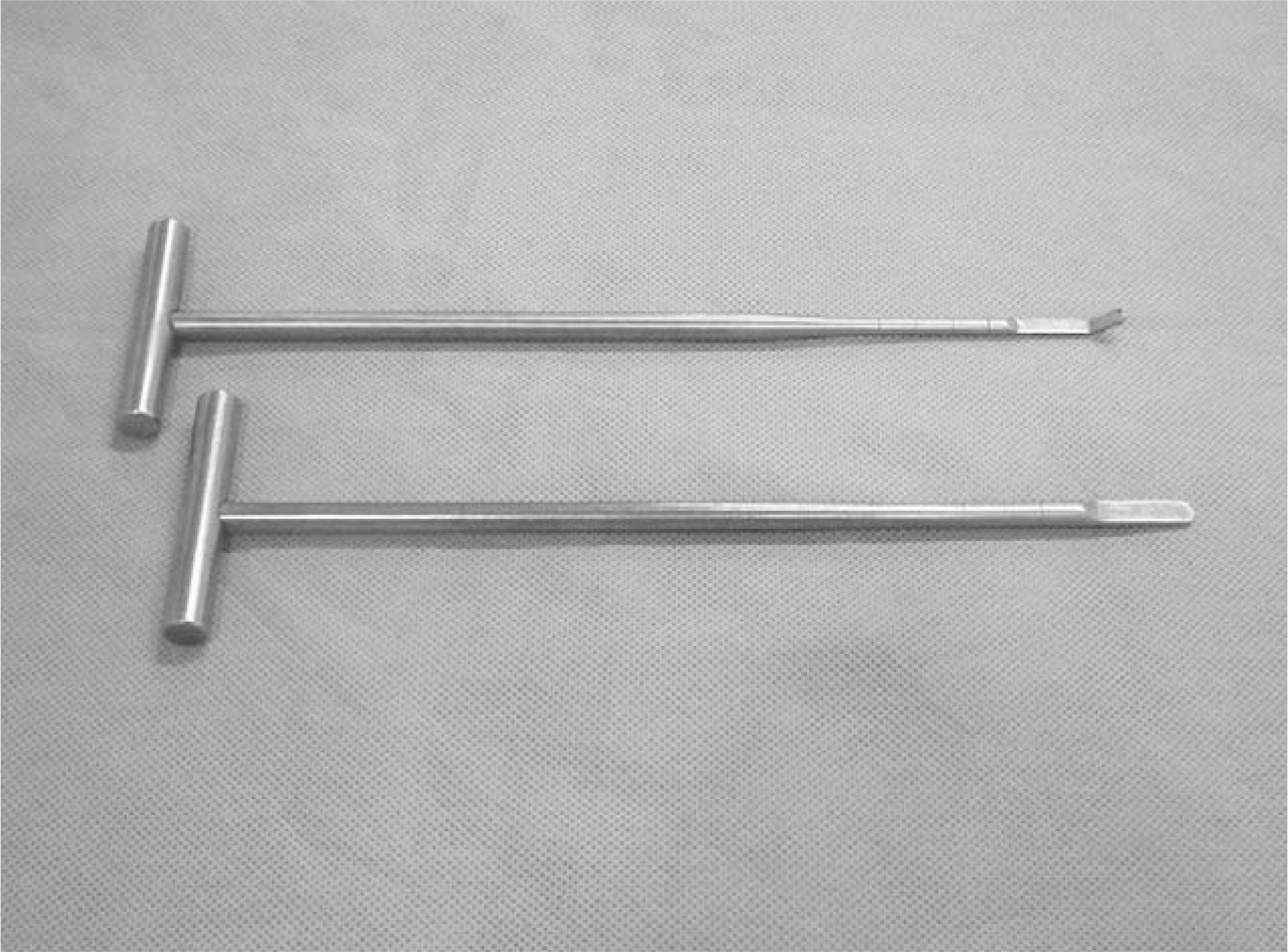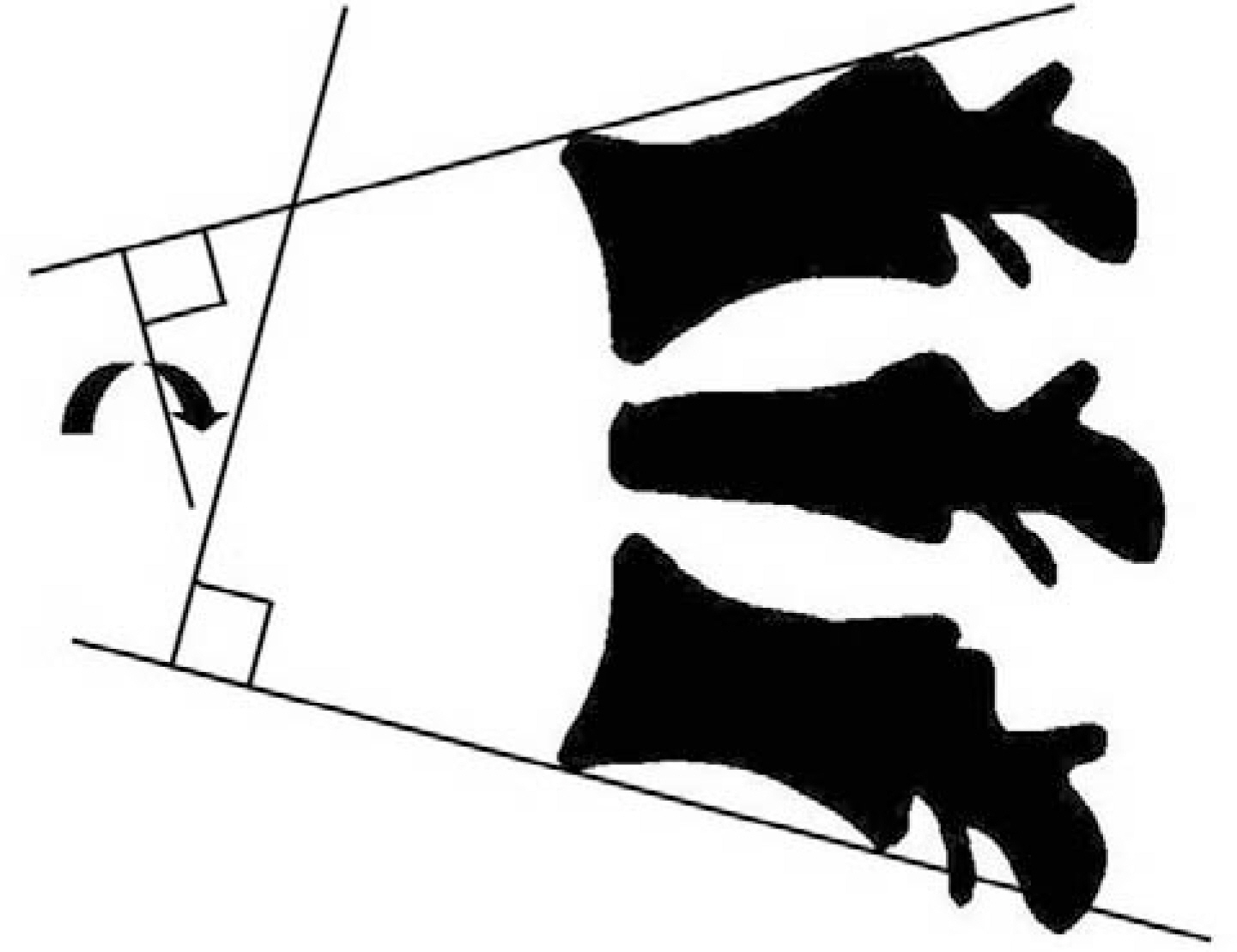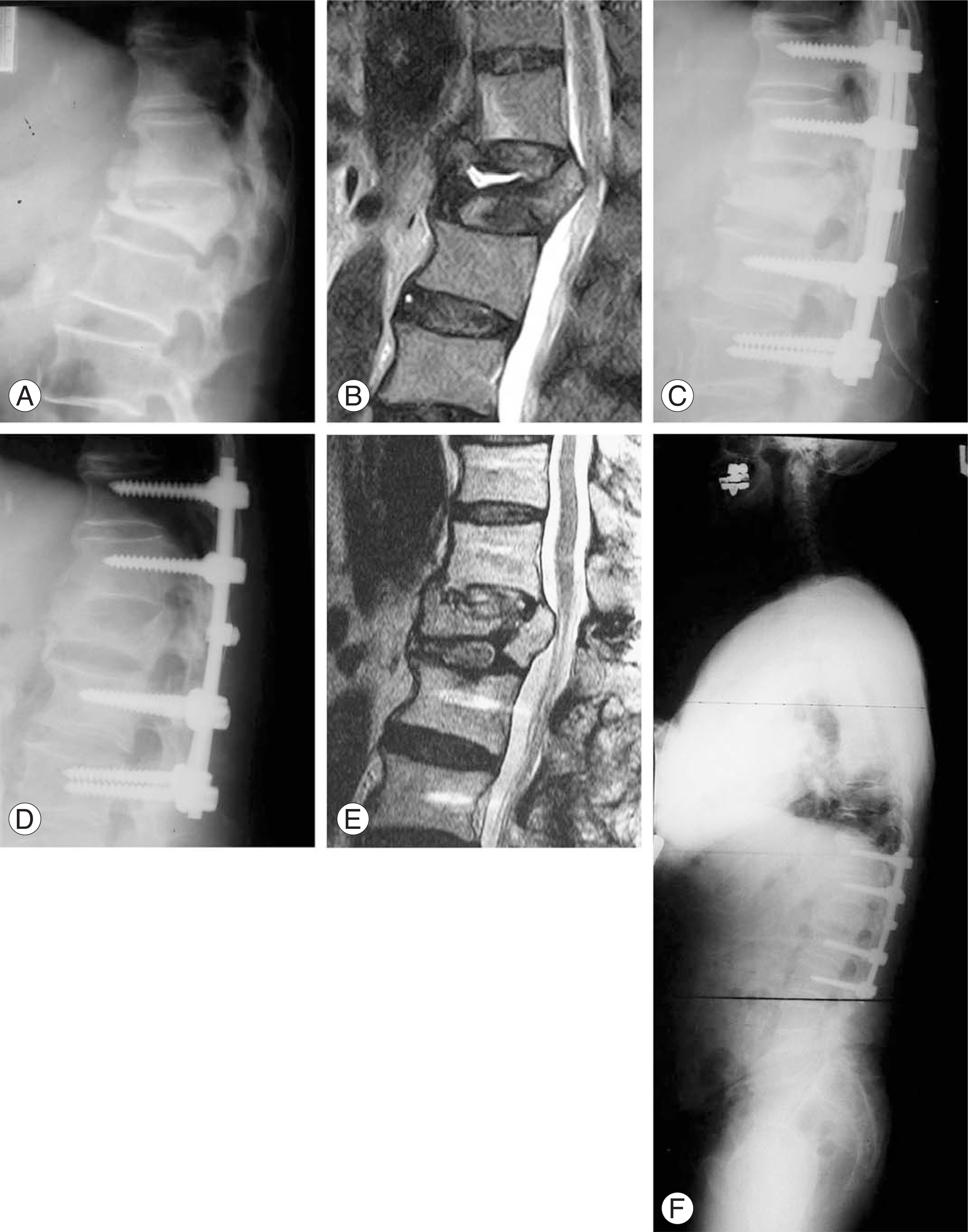J Korean Soc Spine Surg.
2007 Jun;14(2):73-78. 10.4184/jkss.2007.14.2.73.
Operative Treatment of Delayed Collapse of Osteoporotic Vertebral Fracture with Claudication: Transpedicular Bone Graft and Pedicle Screw Fixation
- Affiliations
-
- 1Department of Orthopedic Surgery, Seoul Sacred Heart General Hospital, Seoul, Korea. adkajs@hanmail.net
- KMID: 1941658
- DOI: http://doi.org/10.4184/jkss.2007.14.2.73
Abstract
-
STUDY DESIGN: Retrospective study.
OBJECTIVES
To evaluate the efficacy of transpedicular bone graft and pedicle screw fixation in delayed collapse of osteoporotic vertebral fracture with claudication. SUMMARY OF LITERTURE REVIEW: Delayed collapse of osteoporotic vertebral fracture may result in seemingly unrelenting back pain and neurologic deficits. Though there are many surgical options for such cases, comprehensive improvement of symptoms is uncertain.
MATERIALS AND METHODS
Nineteen patients who underwent operation and were followed-up for more than 2 years were studied. The regional sagittal angle, restoration ratio of the vertebral body, standing sagittal balance, and additional fracture were assessed. Improvement of back and leg pain was assessed using 10 point Visual Analog Scales (VAS). The causes of sustained clinical symptoms were analyzed.
RESULTS
The regional sagittal angle was corrected from 25.2+/-13.9degrees to 12.4+/-10.4degrees (p=0.000). The vertebral body ratio was restored from 36+/-14.1% to 72+/-16.7% (p=0.000). Six cases were found to be neutral and 13 cases showed a positive sagittal balance. Additional fractures were found in 11 cases. The VAS value for leg pain was improved from 6.6+/-1.0 to 1.0+/-1.1 (p=0.000), while that for back pain was not improved (6.4+/-1.7 to 7.1+/-2.3, p=0.474). Positive sagittal balance was a significant risk factor (p=0.037, odds ratio=58.084) for sustained back pain.
CONCLUSION
For the treatment of delayed collapse of osteoporotic vertebral fracture with claudication, transpedicular bone graft and pedicle screw fixation was effective in improving claudication and restoring the vertebral body and regional sagittal angle. However, it was not capable of alleviating back pain. Positive sagittal balance was considered to be a cause of sustained back pain.
MeSH Terms
Figure
Reference
-
1). Ito Y, Hasegawa Y, Toda K, Nakahara S. Pathogenesis and diagnosis of delayed vertebral collapse resulting from osteoporotic spinal fracture. Spine J. 2002; 2:101–106.
Article2). Kim KT, Suk KS, Kim JM, Lee SH. Delayed vertebral collapse with neurological deficits secondary to osteoporosis. Int Orthop. 2003; 27:65–69.
Article3). Shikata J, Yamamuro T, Iida H, Shimizu K, Yoshikawa J. Surgical treatment for paraplegia resulting from vertebral fractures in senile osteoporosis. Spine. 1990; 15:485–489.
Article4). Young WF, Brown D, Kendler A, Clements D. Delayed post-traumatic osteonecrosis of a vertebral body (Ku¨mmell's disease). Acta Orthop Belg. 2002; 68:13–19.5). Halvorson TL, Kelley LA, Thomas KA, Whitecloud TS 3rd, Cook SD. Effects of bone mineral density on pedicle screw fixation. Spine. 1994; 19:2415–2420.
Article6). Alanay A, Acaroglu E, Yazici M, Aksoy C, Surat A. The effect of transpedicular intracorporeal grafting in the treatment of thoracolumbar burst fractures on canal remodeling. Eur Spine J. 2001; 10:512–516.
Article7). Kaminski A, Muller EJ, Muhr G. Burst fracture of the fifth lumbar vertebra: results of posterior internal fixation and transpedicular bone grafting. Eur Spine J. 2002; 11:435–440.8). Knop C, Fabian HF, Bastian L, et al. .:. Fate of the transpedicular intervertebral bone graft after posterior stabilization of thoracolumbar fractures. Eur Spine J. 2002; 11:251–257.9). Leferink VJ, Zimmerman KW, Veldhuis EF, ten Verg-ert EM, ten Duis HJ. Thoracolumbar spinal fractures: radiological results of transpedicular fixation combined with transpedicular cancellous bone graft and posterior fusion in 183 patients. Eur Spine J. 2001; 10:517–523.
Article10). Mirovsky Y, Anekstein Y, Shalmon E, Peer A. Vacuum clefts of the vertebral bodies. AJNR Am J Neuroradiol. 2005; 26:1634–1640.
- Full Text Links
- Actions
-
Cited
- CITED
-
- Close
- Share
- Similar articles
-
- Strategies for Vertebral Augmentation and Increasing Pedicle Screw Purchase in the Osteoporotic Spine Surgery
- Prediction of Subsequent Vertebral Collapse after Osteoporotic Thoracolumbar Vertebral Fractures
- Short- and Long-segment Pedicle Screw Fixation with Anterior Interbody Fusion with Short Bone Graft in Denis type B Burst Fractures
- Short Segment Pedicle Screw Fixation with Augmented Intra-Operative Vertebroplasty in Unstable Thoraco-Lumbar Fracture: Preliminary Report
- Treatment of the Unstable Thoracolumbar Spine Fractures Using Posterior Approach




